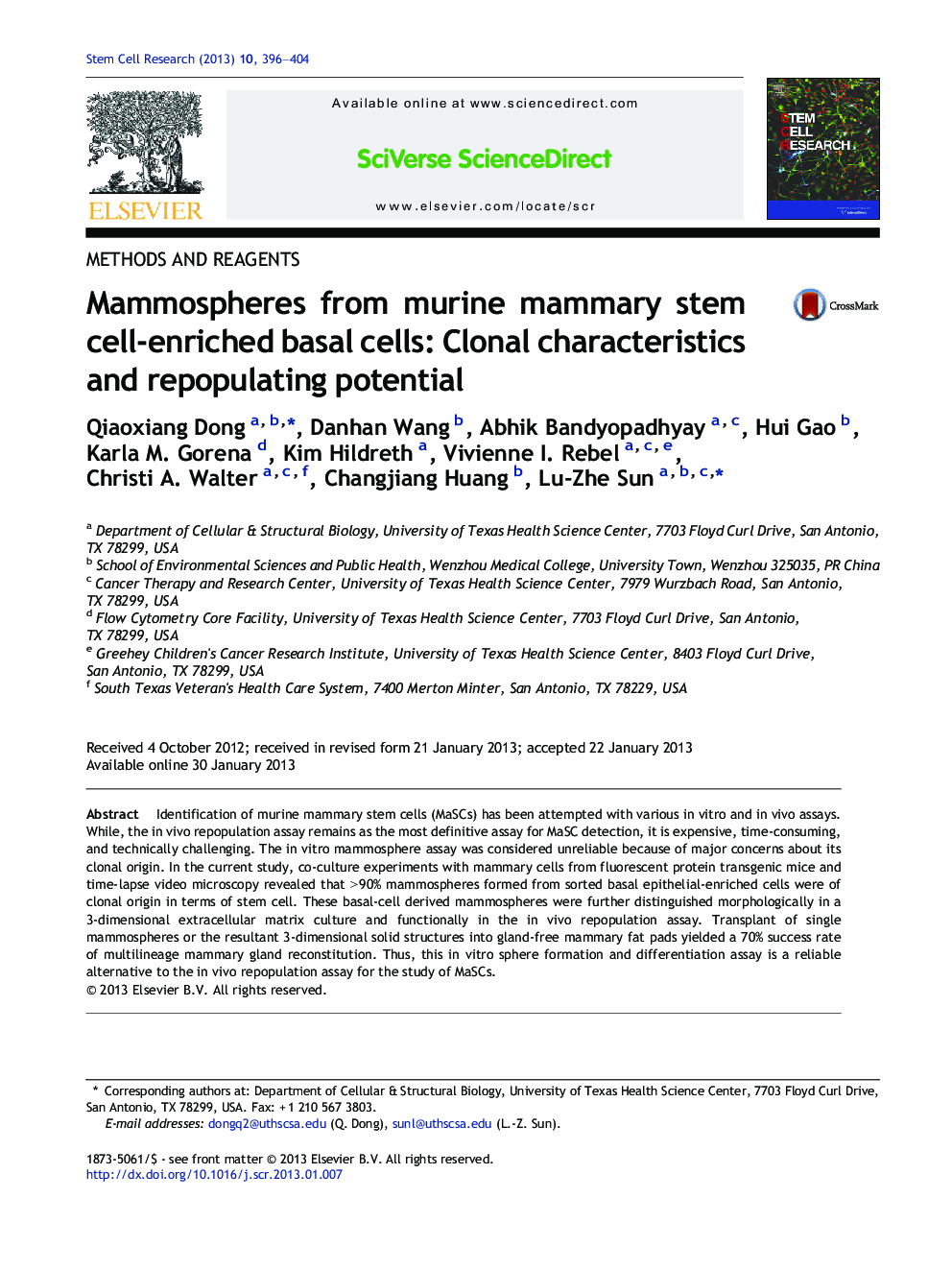| Article ID | Journal | Published Year | Pages | File Type |
|---|---|---|---|---|
| 2094215 | Stem Cell Research | 2013 | 9 Pages |
Identification of murine mammary stem cells (MaSCs) has been attempted with various in vitro and in vivo assays. While, the in vivo repopulation assay remains as the most definitive assay for MaSC detection, it is expensive, time-consuming, and technically challenging. The in vitro mammosphere assay was considered unreliable because of major concerns about its clonal origin. In the current study, co-culture experiments with mammary cells from fluorescent protein transgenic mice and time-lapse video microscopy revealed that > 90% mammospheres formed from sorted basal epithelial-enriched cells were of clonal origin in terms of stem cell. These basal-cell derived mammospheres were further distinguished morphologically in a 3-dimensional extracellular matrix culture and functionally in the in vivo repopulation assay. Transplant of single mammospheres or the resultant 3-dimensional solid structures into gland-free mammary fat pads yielded a 70% success rate of multilineage mammary gland reconstitution. Thus, this in vitro sphere formation and differentiation assay is a reliable alternative to the in vivo repopulation assay for the study of MaSCs.
► We report a novel in vitro quantification assay for mouse mammary stem cells. ► Stromal cells are responsible for cell merging during mammosphere formation. ► Spheres formed from basal epithelial-enriched cells are clonal in stem cell origin. ► This assay provides rapid stem cell identification and quantification in vitro. ► Our results are in good concordance with the in vivo repopulation assay.
